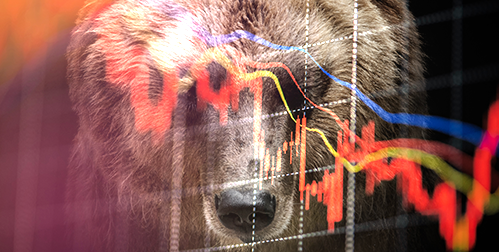Stock Rally – Welcomed but Brief
U.S. stocks have had a volatile month. Staggering inflation, recession fears and a hawkish Fed has sent stocks prices on a tortuous ride.
The stock market briefly bounced back last week from a widespread selloff that began earlier this month. It is set for positive returns amid lower valuations and a hope that inflation may have peaked. As of last Friday, the S&P 500 rose 6.6% from May 19. Analysts forecast the index could rise another 5%.1
Don’t get used to it according to Morgan Stanley. The market has already had one rally that faded this year. The S&P 500 rose 11% in March before losing all those gains. This current rally will be short lived according to the investment bank. They predict the S&P will drop to around 3,400 by mid-August. If that happens, it would be an 18% drop from current levels. It would be a 29% decline from the beginning of the year. “Last week’s strength will prove to be another bear market rally in the end” Morgan Stanley analysts said. They based their analysis on slowing growth and earning estimates that they believe are too high.2
Morgan Stanley foresees the S&P 500 climbing to a maximum of 4,300 point in this current rally. That would put it up 10% from one week ago. Last week the index narrowly missed dipping into official bear market territory. 4,300 is roughly the 50-day moving average for the S&P 500. Inspired by ‘Top Gun’, it has been dubbed the ‘danger zone’ for all the resistance the index will face trying to top it.3
This rally may be more than just an oversold bounce. Some investors believe that the Fed may pause their interest rate increases in September. Bank of America strategists said the central bank would stop tightening in September and leave the benchmark interest rate somewhere between 1.75% and 2%. This potential pause may be inspiring traders to put money back in the market.
Fed Unlikely to Boost Rally
However, Federal Reserve Chairman Powell has been explicitly clear that interest rates will be increased until inflation is under control. He considers 2% an acceptable target. Unfortunately, inflation climbed to 8.3% in April, close to a 40-year high. Stopping inflation has become the Fed’s singular objective. Even slipping into a recession won’t necessarily make the Fed change its hawkish policy. The Fed has already raised rates by 75 basis points so far this year. They are widely expected to raise rates 50 basis points at each of its next two meetings.4
Meanwhile, the odds of entering a recession are increasing by the week. Economic growth is already slowing. The Bureau of Labor Statistics reported that gross domestic product unexpectedly shrank in the first quarter of the year. It was the worst performance since the pandemic caused a brief recession in the spring of 2020. Bear rallies have historical precedence. During the summer of 2008, the S&P 500 saw a double-digit rally. The market then collapsed later that year.
Overall, this recent rally is being seen as the end of the bull market, not a beginning. Many indicators are pointing to a bear market and most likely, recession. Smart investors aren’t trying to game the ‘summer chop’ or try and time brief market rallies. Instead, they are seeking out safe havens that will preserve wealth as the economy goes south. One recommended safe haven is the Gold IRA from American Hartford Gold. For money information about it, contact an AHG precious metal specialist. 800-462-0071






